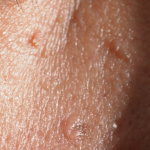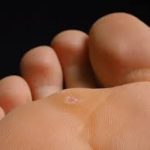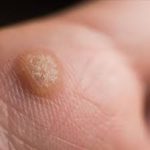

Iconic Beauty Editor Jane Larkworthy - with 20,000 Instagram followers – writes in industry trend setting publication Into The Gloss that "Dermatologist Bruce Robinson created JAS - Just Amazing Skincare for sensitive skin…with Aloe and Tea Tree oils….So soothing….and we have a newcomer! JAS Anti-Aging Retinol Cream against Retinol Reform!”
We checked in with several local experts, including a respected dermatologist with his own line of natural skincare products, and the owner and founder of a new hyped local beauty boutique, to get a better idea of what we should be looking for. Here's who we talked to and what we found...
Dr. Bruce Robinson, a native New Yorker, specializes in adult and pediatric dermatology, dermatologic surgery, cosmetic dermatology and laser surgery. His belief in relationship medicine and personalized attention for his patients has made him a trusted expert among clients and colleagues alike. In addition to running a successful practice, Dr. Robinson dedicates his time to community service and volunteers teaching medical students and medical and dermatology residents. BITB spoke with Dr. Robinson about his passion for his career and the future of aesthetics. Read more...
We all have that one medicine cabinet stocked with unused products that either never worked or that we didn't love. Now, facial lotions, anti-aging creams, and eye-brightening serums cluttering coveted cabinet space may be a thing of the past, thanks to Larchmont resident Bruce Robinson, MD. Robinson created his own medical-grade botanical-based skincare line called Just Amazing Skincare (JAS), to ensure patients have access to products that deliver consistent results. Here's the rest of the story...
Hyperhidrosis can be a bit of a mystery: In the case of primary hyperhidrosis — which may account for about 90 percent of people with the condition — there is no underlying cause for the excessive sweating, according to the International Hyperhidrosis Society (IHS). In contrast, secondary hyperhidrosis has an underlying cause. Dr. Bruce Robinson explains the details.
Winter is the cruelest season — for all your body parts. But it has a silver lining — it’s the ideal time to stay indoors and indulge in self-care, and some ambitious beauty maintenance. Indulgent scrubs and special treatments can reverse winter's damage. Find out what leading experts including Dr. Bruce Robinson advised readers to do.
Anyone concerned with aging can find value in quality skincare products. We put out a call to dermatologists and estheticians asking for their opinions on which products available are ready to help you wage war on any unwanted skin issues plaguing your face. Experts included Dr. Bruce Robinson, MD, board certified adult and pediatric dermatologist in private practice who is also a clinical professor of Dermatology at Lenox Hill Hospital. Read More...
What should you know about the procedure before finalizing your decision? We consider these the five most important distinctions.
While a facelift lasts anywhere from 5 to 10 years, a liquid facelift typically lasts up to 4 - 6 months, for the best possible and longest-lasting results. This makes the procedure a good choice for patients who want apparent improvement, but aren’t quite ready for a surgical facelift or mini facelift—whether due to inhibitions about the surgery or because one’s signs of facial aging aren’t yet very dramatic.
Results of a liquid facelift are evident almost immediately. But since the procedure has so much potential, it’s possible that more than one treatment session would be needed for the best results. This allows improvements to be made incrementally. Some patients appreciate the fact this allows their results to come in more gradually and thus look more natural.
A liquid facelift has excellent potential, but it should be understood from the outset that since no incisions are made and no actual surgery is performed, its results will naturally fall shy of what a complete surgical facelift can accomplish. But let’s look at what a liquid facelift can achieve:
A liquid facelift is cheaper and more affordable than a facelift or mini facelift, with the exact cost depending upon how much of what types of fillers are needed to help you reach your goals for the procedure. Health insurance does not cover the cost of a facelift or a liquid facelift.
A liquid facelift is done with a combination of dermal fillers and neuromodulators. That means fillers like Radiesse®, Juvéderm®, Belotero®, Restylane® will be used to plump and add volume to the skin in deprived areas, while neuromodulators like Botox will be used to reduce the appearance of fine lines and facial wrinkles.
The art of a liquid facelift lies in how it’s done precisely. How much of what fillers are applied in what portions of the face? Dr. Bruce Robinson has mastered this art and looks forward to helping you achieve your facial beauty goals—without surgery, without incisions, and with minimal downtime.
Schedule an office visit to discuss your concerns and skincare goals with Dr. Robinson and the office visit cost will be applied to the future cost for the "consulted procedure". The "consulted procedure" must be completed within 30 days of your consult visit.
Wrinkles are caused by the natural aging process, expressions made by muscles and sun damage. Using Sunscreen daily is the Holy Grail Anti-Aging product. Today there are many treatments available to help reduce fine lines and wrinkles on the skin. For deeper creases, a person may require more aggressive technique. With the latest treatments such as Botox, Fillers, Ultherapy, TempSure, and Fraxel laser skin resurfacing, wrinkles can appear less noticeable and even be prevented. These treatments are easy in office procedures that require little to no social downtime. The results can be immediate or seen in just a few weeks. Say "Good-bye" to wrinkles and fine lines and hello to beautiful, younger, smoother looking skin.
Cosmetic Consultation Reimbursement policy offered to all patients. Come discuss your needs and goals with Dr. Robinson and the office visit cost will be applied to future costs for the discussed procedure. Procedure must be completed within 30 days of your consult visit.
Warts are non-cancerous skin growths caused by a viral infection in the top layer of the skin. Viruses that cause warts are called human papillomavirus (HPV). There are over 100 different types of HPV and some of these cause warts. Warts in the genital area, genital warts, are sexually transmitted and are considered a sexually transmitted infection (STI). A vaccine is available to help protect against the types of HPV that cause genital warts. Genital warts can increase a person's risk of certain types of cancer, therefore vaccination is recommended to decrease your risk.
There are several different kinds of warts including:
Common warts usually grow on the fingers, around the nails and on the backs of the hands. They are more common where skin has been broken, for example where fingernails are bitten or hangnails picked. These are often called "seed" warts because the blood vessels to the wart produce black dots that look like seeds.
Subungual warts: These warts develop beneath fingernails or toenails. While subungual warts are typically not cancerous, there is a risk of them transforming into a type of skin cancer called squamous cell carcinoma, particularly when caused by high-risk types of HPV. Subungual squamous cell carcinoma can also mimic the appearance of a wart, leading to misdiagnosis and delayed treatment.
Foot warts usually appear on the soles (plantar area) of the feet and are called plantar warts. When plantar warts grow in clusters they are known as mosaic warts. Most plantar warts do not stick up above the surface like common warts because the pressure of walking flattens them and pushes them back into the skin. Like common warts, these warts may have black dots. Plantar warts are uncomfortable and painful, feeling like a stone in the shoe.
Flat warts appear as small, smooth usually skin colored, pink or brown bumps on the skin. Common places for flat warts are the face, top of the hands, top of the feet, arms, and legs.
Genital warts - warts in the genital area, also called "condyloma acuminatum", are a sexually transmitted infection (STI) caused by a certain type of human papillomavirus (HPV).They appear as small, flesh-colored bumps in the genital area. While treatable, genital warts are a recurring condition and can be spread through skin-to-skin contact during sexual activity. Vaccination against HPV can protect against certain strains that cause genital warts.
To prevent warts from spreading, dermatologists recommend the following:
While you may be able to clear a wart at home, some warts can be stubborn. If the person has a weakened immune system, it can be difficult to get rid of warts. Sometimes, what looks like a wart turns out to be a callus or another type of growth.
A board-certified dermatologist can help by:
Sometimes, warts can be stubborn, so they don’t clear with treatment that you can buy without a prescription. A dermatologist can create an effective treatment plan.
Because warts can spread, cause pain and affect your day-to-day life, your healthcare provider may recommend treatment. Options include:





